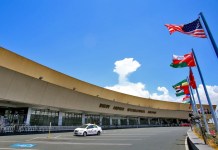The value of the US dollar against the Pakistani rupee has reached another all-time high at Rs 156.80 in the interbank market. Pakistan is the midst of an economic crisis with the overall debt of the country rising to Rs 24,000 Billion.
US Driving India, China, Russia to Abandon the Dollar; Can EURO Be a Replacement?
In the last two days, the Pakistan Rupee has lost almost Rs 5 against the dollar, setting a new record of Rs 157 in the interbank market. The rupee’s slide had continued on Thursday as it fell as low as Rs 154 in the interbank market.
Similarly, a massive increase in the value of gold was also seen today, with the yellow metal trading at Rs75,900 per 12 grams, posting an increase of Rs2,700 per 12gms.
Exchange Companies Association of Pakistan Secretary General Zafar Paracha while speaking to DawnNewsTV said the State Bank should intervene to arrest the rupee’s slide in the interbank market.
He suspected that the rise in the dollar’s value was the result of SBP officials and commercial banks “gambling in the interbank market together”.
Paracha said various “excuses” were being used to raise the greenback’s value on a daily basis, recalling that news regarding pending oil import payments was doing the rounds today that raised the demand for the dollar.
He demanded of the SBP to hold a “high-level” inquiry into the loss of rupee’s value “so that the panic-like situation can be alleviated”.
Similar sentiments were expressed by stakeholders on Thursday. “There was no check from the State Bank. A panic-like situation was seen in the market since every offer to sell dollars was higher than the previous one,” a banker had told Dawn while explaining the volatility.
“If [the rupee’s slide] is not stopped, the dollar may hit Rs180 in just a few weeks,” said another senior banker worried about the government’s agreement with the International Monetary Fund (IMF) regarding the exchange rate management.
Bankers were confused as to why the SBP did not intervene in the market to arrest the rupee’s slide. The volatility in the currency market had subsided in the days prior to Eidul Fitr amid high inflows during the festive season.
Currency dealers, commenting on the rupee’s slide, said that there was no shortage of dollar since the dealers had deposited surplus dollar reserves with the banks. A currency analyst, while explaining the intraday fluctuation, said that with a free float regime in place, demand exceeded supply, squeezing the rupee in a thinly-traded market. “Demand was higher than usual also because of an upcoming IMF repayment,” he said.




